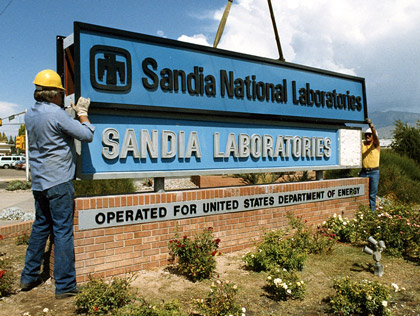The coolest of all superpowers: self-healing is now not just a term of the comics. Metal can be Wolverine too! Just like the fearsome, heavily clawed and anti-ageing hero of one of the most popular pieces of fiction, Logan aka Wolverine, who never had to deal with a problem of scratches or stabbings with his self-healing prowess, scientists from Sandia National Laboratories and Texas A&M University have given us the glad reports of successful experiment where metal too can heal itself. Just like science fiction.

Image source : Sandia National Laboratories
How did it happen with metals
Science fiction inspiring real science has not been an uncommon phenomenon as far as we can look back. It has always been first fantasised on paper and print and then maybe it reaches an utilisable form. However, with this case, the credits should duly reach Michael Demcowicz, who predicted the possibilities of this pleasantly breakthrough discovery long back in 2013 at Texas A&M University.
After 10 years
Beautifully turning out the complications of metallic properties the Sandia scientists have evoked the intrinsic natural ability of metallic grains to shift their boundaries at the nanoscale. In their experiment, they allowed a platinum metal under the stress of a specialised transmission microscope aimed at pulling the ends of the thin strip of metal 200 times per second. In such situations, any metal undergoes a series of developing cracks which eventually snap and cause a failure in the adjustment. This is called fatigue damage.
Fatigue damage in real life
The impact of this success can be counted by looking at the humongous makeup of the system of networks we live in and their proneness to fatigue damage. Metals are metals. They go through wearing and tearing. This simultaneous pressure is what results in architectural failures such as bridges and buildings or mechanical ones like aeroplanes and machinery.
With this US-based discovery, scientists have witnessed the microscopic cracks rebound, as if tracing their steps back to where they emerged from. Imagine if this gets harnessed into the systems and devices we indulge in every day, the picture will not only be cleverly developed but also efficient in matters of cost, time, environment and safety.

Key features of this healing experiment
The experiment, unlike most others, proved itself successful at room temperature, thus indicating the hopes of its transmission into our daily lives at the Centre of Integrated Nanotechnologies. Normally, metal changes its properties only under the influence of heat, but since this study didn’t use the beneficial property of heat it makes the idea seem much more realistic. Though, it is important to note that the whole experiment took place under a vacuum system, meaning the absence of air in a closed set of spaces. While the positivity of the scenario without demanding excessive heat promises a lot, the factual requirement of a vacuum still maintains the distance that’s between the idea and reality.
While the next part will be to solve this part of the problem it is nevertheless, an immaculate attempt in innovation and technology. In the words of Brad Boyce, who is an important part of the study and has been responsible for the report that Sandia National Laboratory published announcing the achievement has described the process to be stunning as a first-hand spectator.
According to the report, the experiment was initially intended to study the formation of cracks but as the scientists further developed their understanding of the matter, they finally found the threads of metal repair themselves after 40 minutes of continuous and repetitive nanoscopic damage that it was subjected to.












